Currently, decorative stone is used for facing socles, facades and interior walls of private houses and apartments. It not only protects surfaces from various damages and dirt, but also acts as a spectacular decor. Natural rock is not as easy to work as artificial, so it will be useful to learn the techniques for assembling artificial stone with your own hands. Having prepared the raw materials for the solution and the shape of optimal sizes, you can get high-quality and beautiful cladding.

Content
Features of a non-natural breed
Before you begin the process of manufacturing a stone, you should understand its general characteristics and the materials of which it can consist. The product may include any raw material selected depending on which surfaces will be decorated - facade or interior.
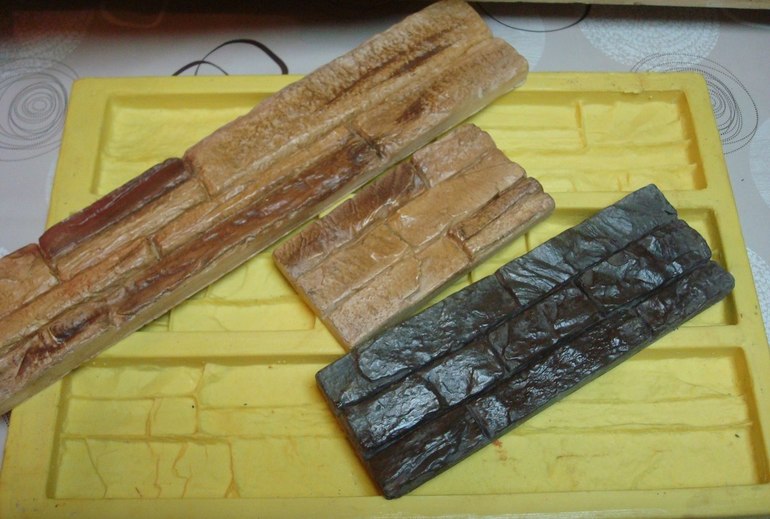
For example, if the owners plan to make decorative bricks for interior work, a gypsum-based mixture may be required. At the same time in the production of facade products use a cement mixture with different impurities.
In addition, for the manufacture of artificial stone at home, you will need to make a suitable shape. Having spent time once, the owners will be able to prepare the right amount of home-made stone rock to decorate a house or land.
Advantages of finishing
Laying homemade rock has a number of positive characteristics. But, before making an artificial stone, the master will have to delve into all the intricacies of the process. Finished, the finishing material has following advantages:
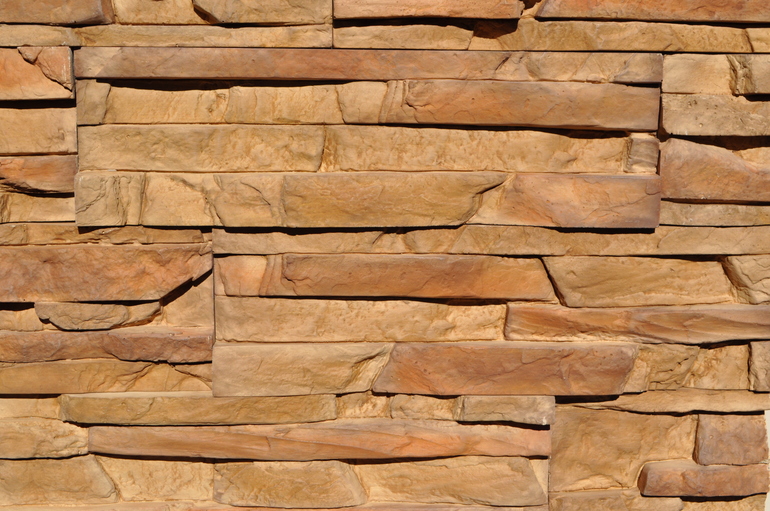
- Low weight compared to natural breed, which facilitates handling, delivery and installation.
- Compliance with all selected parameters: shape, size, color, texture and purpose.
- Considerable cost savings.
- The ability to produce more breed in case of inaccuracies in the calculations.
- A chance to track the quality of the material during manufacture.
In addition, finished decorative materials can be used for various purposes. For example, for paving paths in the garden or exterior decoration of buildings.
Materials of manufacture
Currently, natural stone and its analogues are firmly entrenched in the field of construction. At the same time, a decorative breed can be created on the basis of different materials and available household technologies. The basis of simple formulations may include such components:

- Water.
- Cement (sometimes concrete).
- Coloring pigment.
The output is a fairly durable product with excellent decorative properties. It does not crumble or stratify during processing, and also lends itself to molding.
Products can be used to decorate stoves, fireplaces and barbecues, as they have a sufficient indicator of fire resistance. However, this version of the decor is considered moisture resistant, so it can be embedded in spaces with a high level of humidity.
Do-it-yourself process
Before you make a decorative stone with your own hands, you need to take care of the presence of the optimal shape. Of course, you can buy it in a special store, but for an experienced master it will be easier to create a tool on your own.
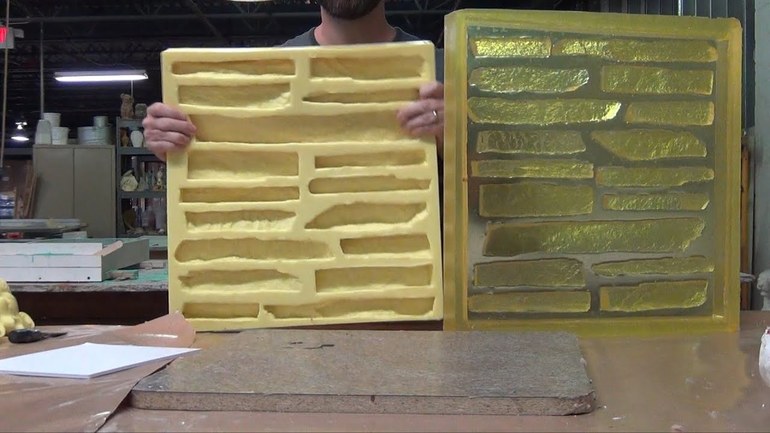
The matrix may be single or complex. The process of stone production will be easier if you use the second option (you can cast several products on it). To create the formwork, you will need a box of plywood or cardboard.In any case, the product should be 10-15 mm wider and 25-30 mm higher than the original sample.
The form should not be removed immediately: the longer it stands, the more cycles of stone production it will withstand. The freezing process may stretch from a few days to a few weeks, depending on the depth and thickness of the fill.
Creating a gypsum product
To create an artificial gypsum stone with your own hands, you need to prepare a convenient and functional space. The table or workbench must have an ideal horizontal surface in order to comply with the required thickness indicators. The process looks like this:
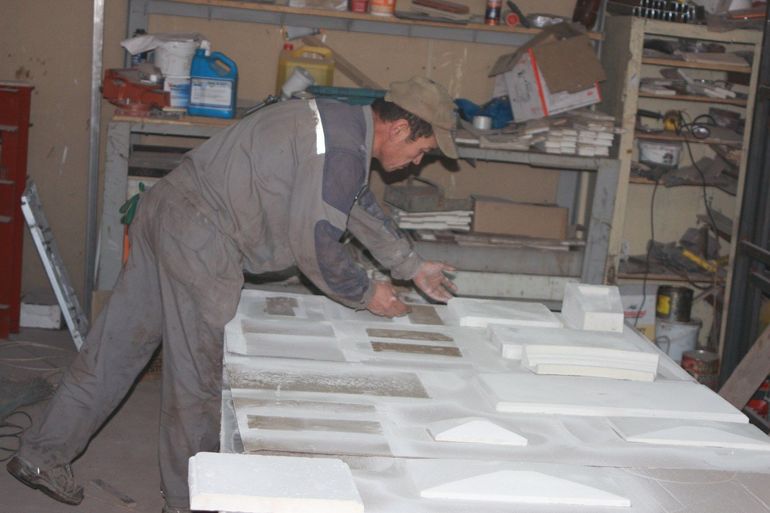
- Setting the mold on the work surface and treating its internal parts with turpentine and wax.
- Preparing the solution for pouring (it is better to mix in small portions).
- Adding gypsum to the solution (sand should be added last).
- Mixing the mixture and pouring it into the mold.
- Cleaning excess mortar and leveling workpieces with a spatula.
The matrix remains on the table until the mixture completely solidifies, while the finished gypsum stones can be pulled out already a day after pouring.
Homemade Wild Stone
A wild cement-based stone made at home can not only have a flat base, as is the case with gypsum counterparts. This decor can be given the appearance of a cobblestone or boulder (for this it is not necessary to use a mold made of silicone). For production, you need to stock up on such materials:

- Cement of a gray shade (M200, M300, M400).
- Sifted sand, preferably from the riverbank.
- PVA glue, coloring pigments and foam.
- Reinforcing mesh and sandpaper.
- Cement based foam or adhesive.
- Sponge to create relief or smooth surfaces.
- Weather resistant acrylic and varnish.
The production of stones begins with cutting out the foam plates and gluing them together. This is done to form the layout of the finished product. Then, the form is wrapped with reinforcing mesh, in parallel to prepare a cement mortar.
A spatula is applied to the surface of the workpiece and is given a torn or other shape. The workpiece freezes, with the help of a sponge it is necessary to indicate the relief. After a few days, the products are treated with sandpaper, and when completely dry, give them a certain color.

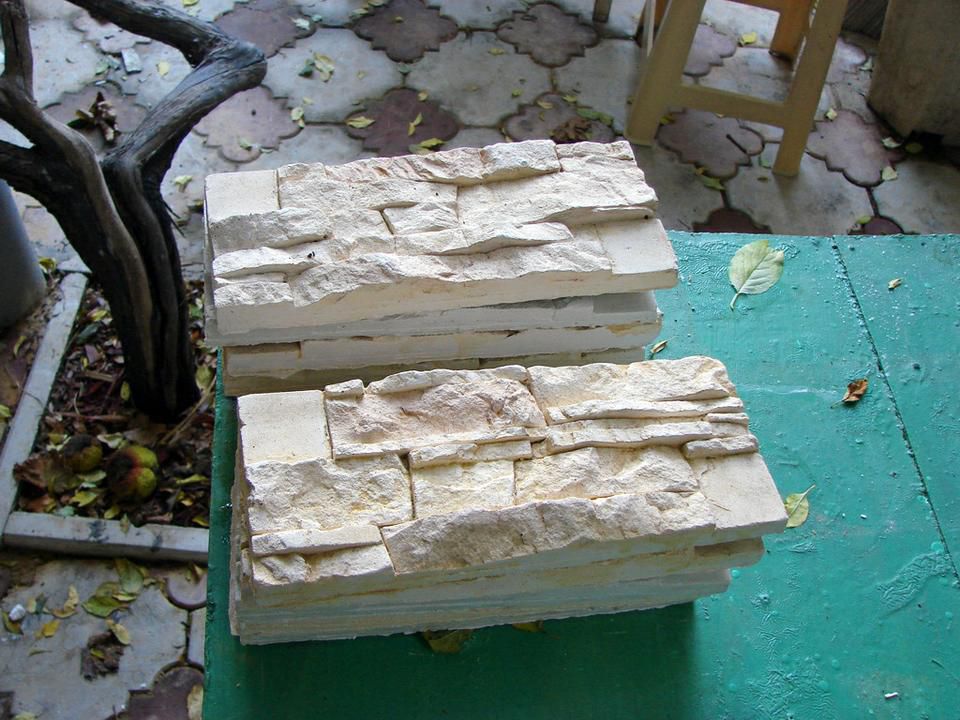



Alas, no comments yet. Be the first!